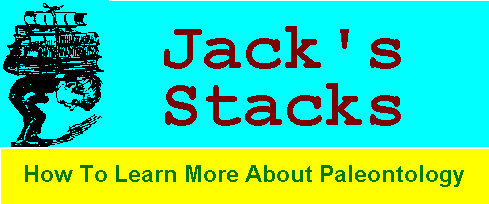
First Rate Paleo Text

You'll probably want to blame Nigel Hughes for this review, but I assure you, it's purely coincidental that my book of the month is a British text. Actually, Nigel did mention this text to me before I stumbled upon it in Acorn Books in Columbus (that's long time Dry Dredgers member Stu Wheeler's store).
The book in review is Invertebrate Palaeontology and Evolution, by E. N. K. Clarkson, George Allen & Unwin publishers, 1979, 323 pages. This was still in print in 1993 at $80.00 for hard cover and $44.95 for soft cover. My used soft cover copy was $16.50.
This book is going to be on my highly recommended list for those of you who really want to learn more about prehistoric life. From what Nigel told me, this is the favored undergraduate text used in England. It certainly fits my criteria in that technical terms are well defined in context and the illustrations are very good. The illustrations vary from charts and graphs to line drawings, photographs, and SEM photographs (Scanning Electron Microscope).
Oh yes, you will have to wind your way around those odd British spellings on occasion (sorry Nigel). This is normally just the typical "ou" in place of an "o" as in colour. I did manage to find one that wasn't immediately intuitive to me: "entour". I figured the meaning out through root words and context, and since I don't want to spoil your fun I won't give away the meaning here.
Since this is a European text, most of the example species named and illustrated are European also, but not exclusively so. As a matter of fact, in the trilobite section, the Cincinnatian trilobite-rusophycus association is mentioned. Anyway, the European faunal names do not detract from this book for the American reader.
Part one is a short 48 page section covering general paleontological concepts. Obviously, 48 pages does not allow for too much in depth coverage but it is sufficient for the purpose. This section is subdivided into "Principles of Paleontology", "Theory of Evolution", and "Origin and Early Diversification of Metazoan Life."
Part two, the bulk of the book, is further broken down into nine subsections. The first eight cover the major groups of invertebrate animals. The ninth section is a brief description of three exceptional faunas: the Burgess Shale, the Hünsrückshiefer, and Mazon Creek.
The chapters covering the invertebrate fauna are further organized into Phylum, Class, and Order where appropriate. These sections cover a range of subjects including biological affinities, geological importance, ecology, stratigraphical use, evolution, and morphology. Not all subjects are discussed in each section.
Clarkson appropriately ends each main section of the book with a list of references. Notable to us are references to Bruce Bell's A Study of North American Edrioasteroidea, and Richard Osgood's Trace Fossils of the Cincinnati Area. You will remember both individuals as well known U.C. graduates. The Treatise is referenced in each chapter.
I know that this is "just another book on invertebrate paleontology" to some. One reason I highly recommend it is that even though I've read many such texts, I still learned new things from this one. Learning by reading alone is more difficult since there is no professor handy to clarify confusing areas; thus, a different book presenting similar information in a different way will many times clarify those items for you.